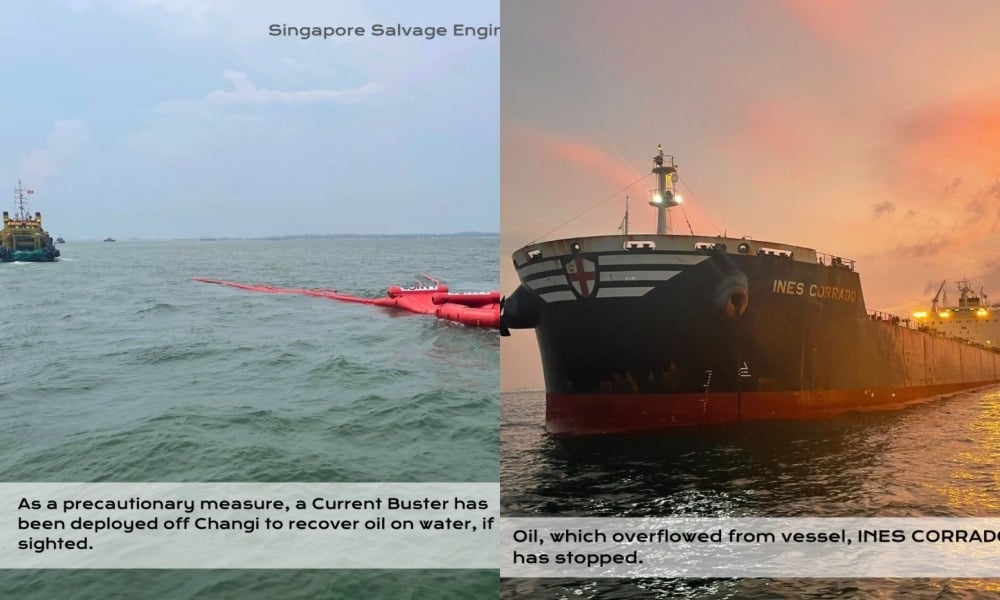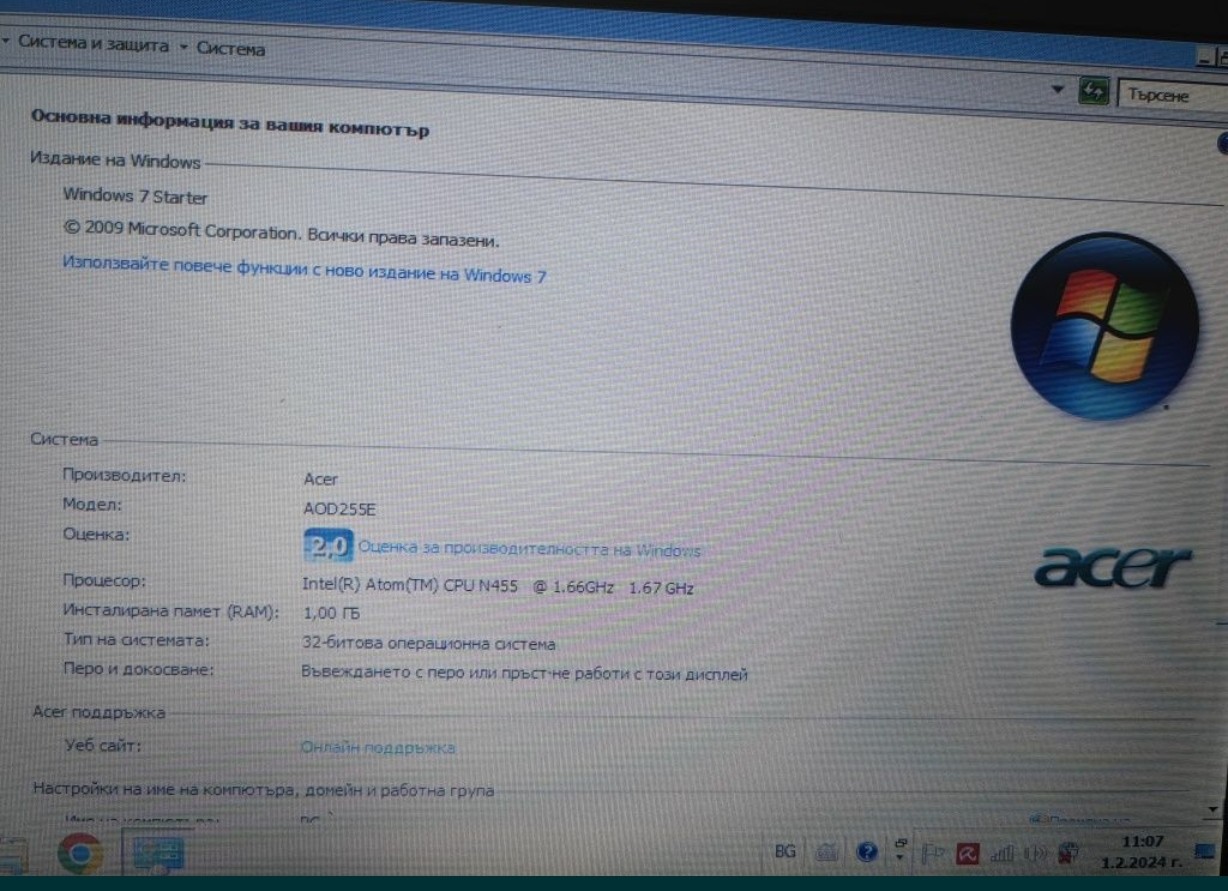Key Highlights:
Bitcoin (BTC):
Current Price: Around $94,200.
Daily Change: -3.86%, reflecting profit-taking and ETF outflows of $684 million.
Weekly Trend: +3.19%, signaling medium-term bullishness despite short-term corrections. Bitcoin remains supported by growing corporate interest, such as Rumble's $20 million allocation to BTC.
Ethereum (ETH):
Current Price: Approximately $3,420.
Daily Change: +1.22%.
Weekly Trend: +8.72%, driven by increasing adoption of layer-2 scaling solutions like Optimism and zkSync, boosting DeFi activities and transaction efficiency.
Altcoin Performance:
Polkadot (DOT): Weekly gain of +37.73%, despite a 6.5% daily drop, likely due to protocol updates and parachain growth.
Solana (SOL): Down by 6.7% daily and 1.68% weekly, affected by network issues and competitive pressures.
Ripple (XRP): Weekly surge of 27.38%, benefiting from positive legal developments.
Market Trends:
Winners: Lido DAO (+7.96%), Arbitrum (+7.43%), and Aave (+5.54%) are top performers, reflecting strong interest in DeFi and Ethereum-linked ecosystems.
Losers: Metaverse projects like The Sandbox and Decentraland saw significant losses, indicating cooling interest in this niche.
Regulatory and Institutional Developments:
Stablecoin regulations and growing transparency are expected to enhance investor confidence.
Institutional investments, particularly through ETFs, are stabilizing the market and reducing volatility.
Overall, the market remains volatile but shows pockets of growth, particularly in Ethereum-related projects and institutional adoption. Investors are advised to watch for updates on regulatory changes and ETF fund flows, which could significantly impact market dynamics. For more detailed insights, visit sources such as ***** ytics Insight, Coingape, and Bluebit blogs
Lenovo tab M10 HD
дисплей 10.1"
тегло 420гр
ROM 64 GB
card slot
RAM 4 GB
отлично състояние, като нов много малко ползван и винаги с кейс и протектор
батерия 5000 mAh
отстатъчна гаранция до 20.11.2024
налични 2бр.
цена 1бр. - 229лв
цена 2бр. - 399лв
за сигурността и комфорта на вашето бебе - бебешко кошче за кола ( и за количка ) сайбекс ( cybex ) , с допълнителна защита при страничен удар ( еърбег ), запазено състояние. Може да се монтира и на количката cybex ( в обявите )
ноутбук лаптоп aspire one d255e, 10.1", двуядрен, 250гб хард диск, window 7 starter. Клавиетурата е с латинска и арабска азбука, понеже е купуван от Дубай. Минимално използван и много запазен. Със зарядно. Бонус - калъф.
390лв, гр. Варна,
тел. 0897693645
за ценители, топ състояние
ПолМъжки
Цвят на цифербалата Син
Материя на каишката Кожа
Стил Спортни
Размер 54 mm
Калъф Стомана
ЗахранванеQuartz–Батерия
Материя на стъклото Минерално
Водоустойчивост100 m, 10 bar
Форма на циферблата Кръгъл
Производител Diesel
Състояние отлично
тел. 0897693645
xiaomi redmi pad se 11" - чисто нов на 1 седмица, 2г. гаранция до 11.2026. Продавам защото няма да го ползвам.
RAM 8 gb
ROM 256 gb
подарък: 1бр. чисто нов прозрачен кейс + 1бр. протектор за дисплея
останалите спецификации: https://www.gsmarena.com/x...
Predicting whether Bitcoin will reach $100,000 soon is challenging, as its price is influenced by a variety of factors, including market sentiment, global economic conditions, regulatory news, and institutional adoption. While Bitcoin has seen significant growth in the past, its price can be highly volatile, and its trajectory is uncertain in the short term.
Here are some key factors that could influence Bitcoin's price movement toward $100k:
Institutional Adoption: Increasing interest from large investors, including hedge funds, family offices, and publicly traded companies, can push Bitcoin's price higher.
Regulation: Positive regulatory news, such as the approval of Bitcoin ETFs or more favorable government policies, could help fuel Bitcoin’s growth.
Market Sentiment: Bullish market sentiment, especially during periods of economic uncertainty or inflation, can drive more retail and institutional demand for Bitcoin.
Technological Developments: Improvements to Bitcoin’s underlying infrastructure (e.g., scalability upgrades or adoption of solutions like the Lightning Network) could enhance its appeal as a store of value or medium of exchange.
Global Economic Factors: Bitcoin is often viewed as a hedge against inflation and currency devaluation. If there’s a continuation of inflationary pressures or a currency crisis, demand for Bitcoin may increase.
While reaching $100k is possible in the long-term given Bitcoin's historical growth, it could take time, and there's no guarantee it will happen soon. Cryptocurrencies are inherently volatile, and Bitcoin has experienced both rapid gains and steep declines in the past.
As with any investment, especially in such a volatile market, it’s important to do your own research, ****** s your risk tolerance, and consider diversifying your portfolio.
https://www.bbc.com/news/a...

Bitcoin tops record $80,000 as Trump nears sweep of US Congress
On the campaign trail the president-elect pledged to make America "the crypto capital of the planet".
https://www.bbc.com/news/articles/c89v1w5lxxqoYes, the master (captain) of a ship can deviate from the planned route and head to the nearest safe port in case of violence or other emergencies on board. This action is part of the master's responsibility to ensure the safety and well-being of the crew, passengers, and the vessel. In situations of violence, the master may prioritize getting the ship to a port where law enforcement or medical ***** istance can address the situation, even if it requires changing course or delaying the journey.
This decision is in line with the general maritime law principles, particularly the duty to safeguard the lives and safety of everyone on board, and it is often supported by international conventions like the SOLAS (Safety of Life at Sea) Convention. If violence threatens the safety of the ship, the master has the authority to take any necessary action to protect the crew and passengers.
https://www.handybulk.com/...

What is Deviation in Shipping? | HandyBulk
The shipowner is obliged to proceed on a given agreed route without unjustifiable departure or unreasonable delay from that route. This is what both a
https://www.handybulk.com/what-is-deviation-in-shipping/A mariner can understand that a ship is dragging its anchor by noticing several signs:
Change in Position: The most obvious sign is the ship's position shifting, especially if the vessel moves significantly from its original anchorage. The mariner can observe this visually (if the horizon or landmarks change), or through onboard GPS systems and charts.
Anchor Alarm: Modern vessels often have an anchor alarm system, which will trigger if the ship drifts beyond a preset distance from the anchor point.
Change in Depth: The depth of water measured by the ship’s depth sounder may change unexpectedly, indicating that the anchor is no longer holding and the vessel is drifting into deeper waters.
Wind or Current: A sudden change in wind direction or current might cause the anchor to drag, especially if the anchor wasn't set properly or if the sea conditions change dramatically.
Anchor Chain Movement: Observing the slack in the anchor chain or windlass can also indicate the anchor is dragging. If the chain becomes tight and there’s no significant movement of the vessel, it could be an indication that the anchor is dragging.
Steps to Take if the Anchor is Dragging:
Alert the Crew: The first step is to inform the ship’s crew and captain to **** s the situation and plan the next steps.
Check the Anchor and Scope: Confirm that the anchor is properly set and the scope (length of anchor chain relative to depth) is sufficient for the current conditions.
Increase Power: The mariner should use the engine to carefully regain control of the vessel. This helps to steady the ship and avoid further drift.
Re-anchor or Move to Safer Area: If the anchor continues to drag, the ship may need to weigh anchor and reposition. The vessel should move to a safer location, possibly deeper water, to re-anchor or try a different anchoring method.
Monitor Position: Once the anchor is set again, continuously monitor the vessel’s position using GPS or visual references, and ensure the anchor is holding securely.
In general, the priority is to prevent the ship from drifting into hazards such as shallow waters, other vessels, or shorelines, while ensuring crew safety.
https://www.ukpandi.com/ne...

Dragging Anchor and Maritime Accidents
This report outlines an example of an accident caused by dragging anchor and an examination of possible ways to prevent a ship from dragging its anchors.
https://www.ukpandi.com/news-and-resources/articles/2021/dragging-anchor-and-maritime-accidents/Python is a high-level, interpreted programming language known for its simplicity, readability, and versatility. It has a rich ecosystem of libraries and frameworks that support a wide range of applications, from web development and automation to data science, machine learning, artificial intelligence, and more. Here's why Python has a bright future:
1. Simplicity and Readability
Python’s syntax is clean and easy to learn, making it a great language for beginners. Its design philosophy emphasizes code readability and reduces the complexity of writing programs. This simplicity leads to faster development cycles and is one of the reasons why Python is popular in educational settings.
2. Versatility and Wide Adoption
Python can be used for a variety of applications:
Web development: Frameworks like Django and Flask enable rapid development of web applications.
Data Science & Machine Learning: Libraries like NumPy, pandas, TensorFlow, and scikit-learn make Python the go-to language for data **** ysis, statistical modeling, and AI.
Automation: Python is often used to write scripts for automating repetitive tasks, making it popular in IT and operations.
Software Development: With tools like PyQt and Kivy, Python can also be used to develop cross-platform desktop applications.
3. Large Ecosystem of Libraries and Frameworks
Python has a vast repository of third-party libraries available through the Python Package Index (PyPI). These libraries allow developers to quickly implement complex functionalities without having to write everything from scratch.
4. Strong Community and Support
Python has a large, active, and vibrant community of developers. This means extensive documentation, tutorials, forums, and user-contributed packages. Community-driven development also ensures that Python remains updated and adaptable to new technologies.
5. Cross-Platform Compatibility
Python is cross-platform, meaning it runs on various operating systems, including Windows, macOS, and Linux. This flexibility ensures that developers can deploy their applications in a variety of environments without having to rewrite the code.
6. Growing Demand in Emerging Technologies
Artificial Intelligence (AI) & Machine Learning (ML): Python is the most commonly used language in AI/ML development. Its libraries and frameworks are highly optimized for data processing and building machine learning models.
Data Science and **** ytics: Python's strong data manipulation libraries (e.g., pandas, NumPy, and matplotlib) make it the preferred choice for data **** ysts and scientists. With the explosion of big data, Python is central to **** ytics.
IoT (Internet of Things): Python is increasingly used in IoT projects due to its ease of use, flexibility, and compatibility with hardware like Raspberry Pi.
7. Performance Improvements
While Python is not the fastest language due to being interpreted, the performance gap has been closing. Tools like PyPy (a just-in-time compiler) and Cython (which allows writing C extensions for Python) allow developers to speed up critical parts of their applications. Additionally, Python’s integration with other languages, like C or Java, helps improve performance when needed.
8. Corporate Support
Major tech companies like Google, Facebook, NASA, and Spotify use Python in various capacities. The backing of these organizations provides stability to the language and ensures it remains a valuable skill in the job market.
9. Ease of Integration
Python integrates well with other languages and technologies. For instance, it can call C/C++ libraries for performance-heavy tasks, interface with Java applications, or communicate with web services via APIs. This makes Python suitable for a wide range of applications and use cases.
10. Educational Use and Adoption
Python is frequently used to teach programming concepts at universities and coding boot camps. Its simplicity and broad use in real-world applications mean that new generations of developers are often introduced to it early in their careers.
11. Global Popularity and Career Opportunities
Python is consistently ranked as one of the most popular programming languages in the world, and job demand for Python developers remains high. It’s especially prominent in fields like data science, AI, web development, and automation.
Conclusion: The Future of Python
Python’s future looks bright because it continues to evolve with the demands of the technology landscape. Its role in fields like AI, machine learning, data science, and automation will only increase, and its simplicity and readability will continue to make it a favorite choice for both beginners and experienced developers. As long as it maintains its strong community support and adapts to emerging trends, Python will remain a central player in the programming world.
https://www.python.org/
1. Switch to Cleaner Fuels
Low-Sulfur Fuels: The International Maritime Organization (IMO) has implemented regulations to reduce sulfur emissions. Ships can use low-sulfur fuels (like Very Low Sulfur Fuel Oil - VLSFO) instead of traditional high-sulfur bunker fuel.
Liquefied Natural Gas (LNG): LNG is a cleaner alternative to conventional marine fuels as it significantly reduces emissions of CO2, sulfur oxides (SOx), and nitrogen oxides (NOx).
Biofuels: Some ships are beginning to use biofuels made from renewable sources like algae, waste oils, or plant-based materials, which have a lower carbon footprint.
Ammonia and Hydrogen: Though still in the experimental stage, ammonia and hydrogen have the potential to be carbon-free fuels when produced from renewable sources.
2. Energy Efficiency Measures
Hull Design & Maintenance: Modern hull designs, such as those with smoother surfaces and more hydrodynamic shapes, can reduce drag and fuel consumption. Regular cleaning and maintenance of the hull can also help maintain fuel efficiency.
Energy-saving Devices (ESDs): These include air bubble systems, ducts, and fins that improve the flow of water around the ship, reducing resistance and energy consumption.
Wind Propulsion Technologies: Technologies like sails, kite sails, and rotor sails harness wind energy to reduce the reliance on engines and reduce fuel consumption.
Energy-Efficient Engines: Newer, more efficient engines consume less fuel and emit fewer pollutants. Engine tuning, regular maintenance, and using low-load engines (engines optimized for slower speeds) can also improve energy efficiency.
3. Use of Scrubbers and Exhaust Gas Cleaning Systems
Scrubbers: These are devices installed on the exhaust stacks to remove sulfur oxides (SOx) and other pollutants from ship emissions. Scrubbers can clean exhaust gases, allowing ships to burn higher sulfur content fuel while meeting emission regulations.
Exhaust Gas Recirculation (EGR): EGR systems reduce NOx emissions by recirculating part of the exhaust back into the combustion chamber, reducing the formation of NOx during combustion.
4. Operational Efficiency and Best Practices
Slow Steaming: Reducing the speed of a ship, a practice known as slow steaming, reduces fuel consumption and emissions. Lower speeds also decrease the energy required to overcome hydrodynamic resistance.
Weather Routing: Using weather data and forecasting tools to optimize a ship's route can reduce fuel consumption and emissions by avoiding adverse weather conditions (e.g., headwinds) and taking advantage of favorable currents.
Port Time Optimization: Efficient port operations, such as reducing the time ships spend waiting at ports or idling, can also lower emissions. Strategies like cold ironing (using shore power while docked) allow ships to turn off engines while in port, reducing the use of auxiliary engines that produce emissions.
5. Carbon Capture and Storage (CCS)
Though still in the early stages, the concept of carbon capture and storage for ships involves capturing CO2 emissions from the exhaust gases and storing them safely, preventing their release into the atmosphere. This is still an emerging technology for the maritime industry.
6. Alternative Propulsion Technologies
Electric Propulsion: The use of batteries or fuel cells for electric propulsion is gaining attention, especially for short-sea shipping and ferries. These vessels rely on electricity stored in batteries or generated on board through renewable energy sources.
Hybrid Systems: Hybrid propulsion systems combine traditional internal combustion engines with batteries or fuel cells, allowing for reduced emissions during certain parts of the voyage (e.g., port entry, and docking).
7. Compliance with International Regulations
IMO 2020 Regulation: The International Maritime Organization (IMO) introduced the IMO 2020 sulfur cap, which limits the sulfur content in marine fuels to 0.5% globally (down from 3.5%). This has encouraged the use of low-sulfur fuels or the installation of scrubbers.
IMO’s GHG Strategy: The IMO has set a goal to reduce greenhouse gas emissions from shipping by at least 50% by 2050 (compared to 2008 levels). This includes measures such as reducing carbon intensity (CO2 per ton-mile) and encouraging the use of zero-emission fuels.
8. Research and Development of Innovative Technologies
Investment in R&D for new technologies, including carbon-neutral fuels, improved propulsion systems, and advanced emissions abatement technologies, will be essential to achieving long-term reductions in ship emissions.
Collaborative efforts between shipping companies, fuel suppliers, technology providers, and regulatory bodies can speed up the development of these innovations.
Reducing ship emissions involves a combination of technological advancements, operational efficiencies, and the use of cleaner fuels. The maritime industry is increasingly moving toward a sustainable future, driven by stricter environmental regulations and the growing demand for environmentally responsible practices. By adopting these strategies, the shipping industry can significantly reduce its environmental footprint and contribute to global efforts in tackling climate change.
https://www.goltens.com/pr...
If you suspect someone is having a heart attack, acting quickly is critical to saving their life. Here's a step-by-step guide on what to do in case of a heart attack:
1. Call Emergency Services Immediately (911 or your local emergency number)
Time is critical during a heart attack. The sooner medical help arrives, the better the chances of survival and reducing damage to the heart.
Make sure you provide the operator with clear details: the person’s symptoms, age, and condition. If possible, have someone else call while you ****** ist the victim.
2. Help the Person Stay Calm and Rest
Encourage the person to sit down and stay calm. Reassure them that help is on the way.
Avoid exertion, as physical activity can worsen the heart attack.
3. Chew Aspirin (If the Person is Not Allergic)
Give the person aspirin if they are conscious and not allergic to it. Aspirin helps thin the blood and can reduce the severity of a heart attack.
Dosage: A typical dose is 325 mg (one regular aspirin or four 81 mg baby aspirin). Let the person chew it slowly rather than swallowing it whole, as this speeds absorption.
4. Perform CPR if the Person Becomes Unconscious
If the person loses consciousness and is not breathing, start CPR immediately.
Chest Compressions: Place your hands in the center of the chest and push down hard and fast (about 2 inches deep at a rate of 100-120 compressions per minute).
If you're trained, provide rescue breaths after every 30 compressions (mouth-to-mouth or using a face shield if available).
If you're untrained or unsure, just perform hands-only CPR (chest compressions) until help arrives.
5. Use an AED if Available
If there’s an automated external defibrillator (AED) nearby, turn it on and follow the instructions. It can deliver a shock to restore a normal heart rhythm if necessary.
6. Monitor the Person’s Condition
Stay with the person, keep them as calm as possible, and continue to monitor their breathing and heart rate until medical help arrives.
Key Symptoms of a Heart Attack to Watch For:
Chest pain or discomfort (often a feeling of pressure, tightness, or squeezing)
Pain in the upper body (arms, back, neck, jaw, or stomach)
Shortness of breath
Nausea or lightheadedness
Cold sweat or dizziness
Remember that time is muscle: The quicker medical help is received, the better the outcome. Immediate action can prevent heart muscle damage and save lives.
дисплей 10.1"
тегло 420гр
ROM 64 GB
card slot
RAM 4 GB
отлично състояние, като нов много малко ползван и винаги с кейс и протектор
батерия 5000 mAh
отстатъчна гаранция до 20.11.2024
налични 2бр.
цена 1бр. - 229лв
цена 2бр. - 389лв
Xiaomi Mi 11 Lite 5G NE
128 gb ROM
8+4 gb RAM
Octa core
android 14
Много тънък телефон (6.8мм) и много лек (159гр.), много бърз процесор и много добра задна камера 4К.
Състояние - неразличим от нов
тел. 0897693645
изпращам по куриер с опция за преглед и тест
цена 99лв
08976936450
antivirus protection for your smartphone can be a smart choice, though it’s not always strictly necessary for everyone. The need for antivirus protection depends on factors such as your usage habits, the type of smartphone you have, and the apps you install.
Why You Might Need Antivirus on Your Smartphone:
Malware and Viruses: Smartphones are not immune to malware, viruses, and other types of malicious software that can compromise your privacy, steal personal information, or cause damage to your device. While iOS devices (iPhones) are more secure due to the closed nature of the App Store, Android phones are more susceptible to malware from third-party apps and unverified sources.
Phishing: Smartphones are increasingly targeted by phishing attacks, where malicious actors try to steal login credentials or financial data. Antivirus apps can help detect and warn you about phishing websites and apps.
Privacy Protection: Many antivirus apps offer features like privacy scanners that can help identify apps that are collecting too much data, tracking your location, or accessing sensitive information like contacts or messages.
Theft Protection: Some antivirus apps offer features like remote wiping, location tracking, and lock features in case your phone gets lost or stolen.
App Scanning and App Permissions: Antivirus apps can scan for suspicious apps that may have harmful permissions or be sources of malicious activity, particularly on Android devices where the risk is higher.
Top 10 Antivirus Protection Apps for Smartphones (2024):
Here are some of the best antivirus protection apps for both Android and iOS devices. The rankings are based on features, security, ease of use, and overall effectiveness.
1. Norton Mobile Security
Platforms: Android, iOS
Features:
App Advisor for Android that scans apps for malicious behavior before they’re downloaded.
Web protection and anti-phishing.
Device security and anti-theft features.
Wi-Fi security scanner to identify insecure networks.
Pros: Comprehensive protection, including privacy protection, anti-theft, and device tracking.
Cons: Some features are only available in the premium version.
2. McAfee Mobile Security
Platforms: Android, iOS
Features:
Anti-theft features (remote lock, locate device, wipe data).
App lock for added privacy.
Wi-Fi security and anti-phishing.
Battery optimizer and storage cleaner.
Pros: Excellent for privacy and theft protection, user-friendly.
Cons: Some advanced features require a premium subscription.
3. Avast Mobile Security
Platforms: Android, iOS
Features:
Virus and malware protection.
Anti-theft, photo vault, and app lock.
Wi-Fi network security scanner.
App permissions monitor.
Pros: Free version with decent protection and a simple interface.
Cons: Ads in the free version, and some advanced features are locked behind a paywall.
4. Kaspersky Mobile Antivirus
Platforms: Android, iOS
Features:
Malware and virus scanning.
Anti-theft features, including remote wipe and GPS tracking.
App lock and privacy protection.
Anti-phishing.
Pros: Strong detection rates, free version with key features.
Cons: Limited features in the free version; full protection requires a premium subscription.
5. Bitdefender Mobile Security
Platforms: Android, iOS
Features:
Anti-theft tools (remote lock, locate, wipe).
Account privacy and anti-phishing.
Anti-malware and virus protection.
VPN and Web protection.
Pros: Excellent malware detection, VPN service, and app lock.
Cons: Premium version has more advanced features.
6. Trend Micro Mobile Security
Platforms: Android, iOS
Features:
Anti-malware, app privacy checks.
Web and app protection from threats.
Anti-theft features, including remote locking and wiping.
Wi-Fi checker and app locker.
Pros: Strong malware protection and privacy features.
Cons: Some features are only available in the premium version.
7. Sophos Intercept X
Platforms: Android, iOS
Features:
Malware, ransomware, and phishing protection.
Web filtering and privacy protection.
Lost device protection with remote wipe.
App locker.
Pros: Excellent free version with solid security features.
Cons: The interface isn’t as intuitive as some others.
8. Lookout Mobile Security
Platforms: Android, iOS
Features:
Anti-theft protection, remote data wipe, and device location tracking.
Mobile threat protection, including app scanning.
Safe browsing and identity theft protection.
Pros: Great for privacy protection and identity theft.
Cons: Limited features in the free version; premium version required for advanced tools.
9. ESET Mobile Security
Platforms: Android
Features:
Anti-malware and anti-theft features.
App and device scanning for vulnerabilities.
Anti-phishing and web protection.
Remote lock, locate, and wipe.
Pros: Good malware detection, anti-theft tools.
Cons: Paid version is required for full protection.
10. Mobile Security by Avast (Free version)
Platforms: Android, iOS
Features:
Malware protection.
Anti-theft tools (location tracking, remote wipe).
App permissions monitor.
Wi-Fi security scanner.
Pros: Free version offers decent protection.
Cons: Ads and limited features in the free version.
Do You Need Antivirus on Your Smartphone?
Whether or not you need antivirus protection largely depends on how you use your phone. Here are a few points to consider:
iOS Devices: iPhones and iPads generally have strong security measures in place, and the App Store is tightly controlled to prevent malicious apps from being published. However, using unsafe third-party apps or clicking on suspicious links (e.g., phishing attempts) can still pose a risk. In general, the iOS operating system is less vulnerable to traditional viruses, but antivirus apps can still provide extra privacy protection and web security.
Android Devices: Android phones are more ***** e to security risks due to the more open nature of the operating system and the ability to install apps from third-party sources. Antivirus software is more critical here, especially for protection against malware, adware, and spyware.
When Should You Install Antivirus on Your Phone?
If you download apps from third-party stores or use APK files not verified by Google Play (for Android users).
If you tend to click on links from unknown sources or receive a lot of spam emails.
If you use your phone for online banking or handle sensitive personal information.
If your phone is frequently connected to public Wi-Fi networks, which could expose you to hacking risks.
In summary, while iOS devices are generally secure, Android users should consider using antivirus software, especially if they often install apps from outside Google Play or need additional privacy protection. The top antivirus apps listed above are some of the best choices for keeping your smartphone safe from threats in 2024.
https://www.safetydetectiv...

10 Best Android Antiviruses 2024: Secure Your Device
Find the most powerful, highest security antivirus app to protect your Android device now. Our cybersecurity expert has found the 5 best mobile Android apps for all smartphones and tablets. Find the best protection here.
https://www.safetydetectives.com/best-antivirus/android/Major Events That Influence Cryptocurrency Fluctuations:
Government Regulations and Policies:
Regulation of Cryptocurrencies: Government decisions on how cryptocurrencies are regulated can have a significant impact on their value.
For example:
Stricter Regulations: If governments impose stricter rules on crypto exchanges, taxation of crypto transactions, or AML/KYC (Anti-Money Laundering/Know Your Customer) requirements, it could create uncertainty and cause market volatility.
Clearer Regulations: On the other hand, clear, crypto-friendly regulations can help legitimize the market and increase adoption.
Central Bank Digital Currencies (CBDCs): The development and potential launch of government-backed digital currencies could challenge or complement existing cryptocurrencies.
Macroeconomic Events:
Interest Rate Changes: When central banks (such as the U.S. Federal Reserve) raise or lower interest rates, it can influence risk appetite in the financial markets. Cryptocurrencies are often seen as higher-risk ****** ets, so rate hikes (which make traditional investments more attractive) can lead to a decrease in crypto prices, while rate cuts may have the opposite effect.
Inflation: Cryptocurrencies like Bitcoin are often seen as a hedge against inflation, so high inflation may lead to an increase in demand for digital ****** ets. Conversely, stable or low inflation could reduce crypto’s appeal as an inflation hedge.
Technological Advancements:
Improvements in Blockchain Technology: Advances such as Ethereum's transition to proof-of-stake (PoS) or enhancements in scalability and transaction speed can lead to increased confidence in the technology, boosting the value of ****** ociated cryptocurrencies.
Security Vulnerabilities: On the flip side, if a major cryptocurrency hack or vulnerability is exposed, it could lead to panic selling and a temporary decline in the market.
Market Sentiment:
Investor Sentiment and Media Influence: Crypto markets are highly driven by sentiment. Positive news, like institutional investment (e.g., Tesla buying Bitcoin) or celebrity endorsements, can trigger surges in prices, while negative news (e.g., exchange hacks, fraud cases, or regulatory crackdowns) can lead to sharp declines.
Social Media Influence: Platforms like Twitter, Reddit, and others have shown that viral trends and influencer opinions can lead to massive fluctuations in the crypto market (e.g., the rise and fall of Dogecoin or Shiba Inu).
Geopolitical Events:
Political Instability: Geopolitical tensions, such as wars, trade disputes, or political crises, can make cryptocurrencies more attractive as a safe haven ****** et. This was seen with Bitcoin and Ethereum prices rising during times of geopolitical uncertainty, as investors looked for alternatives to traditional fiat currencies.
Legal Tender Adoption: If countries adopt Bitcoin or other cryptocurrencies as legal tender (like El Salvador did with Bitcoin), it could legitimize crypto ****** ets in the global economy and lead to a price surge.
Potential Impact of Trump’s Win on the Crypto Market:
Pro-Business and Deregulatory Stance:
Pro-Crypto Policy: Trump has often been pro-business and may take a more deregulatory approach towards cryptocurrencies, which could benefit the market. If his administration were to ease regulations on crypto exchanges, or if he advocated for lower taxes on cryptocurrency gains, it could lead to a surge in institutional and retail investment in digital ****** ets.
Positive Impact: A pro-business, pro-crypto environment could increase confidence in the market, leading to higher demand, especially from institutional investors looking for opportunities in a less regulated environment.
Example: When the U.S. Securities and Exchange Commission (SEC) or other regulators take a more hands-off approach to cryptocurrencies, it can allow businesses to innovate without fear of heavy penalties or restrictions, making it easier for crypto-related projects to grow.
Inflation and Debt Concerns:
Currency Devaluation: If Trump's economic policies led to higher government spending or increased national debt, it might prompt inflationary pressures. Many see Bitcoin and other cryptocurrencies as a hedge against inflation, so an increase in inflation or a weakened U.S. dollar under Trump’s policies could spur more demand for digital ****** ets, particularly Bitcoin.
Positive Impact: If inflation fears rise under Trump’s administration, more investors might flock to crypto as a store of value, especially in light of concerns about fiat currency devaluation.
Regulation of Stablecoins and CBDCs:
Trump’s administration might introduce policies around stablecoins and the potential launch of Central Bank Digital Currencies (CBDCs).
Stablecoins like Tether (USDT) or USD Coin (USDC) are linked to fiat currencies like the U.S. dollar. If Trump’s government creates favorable policies for stablecoins, their use could become more widespread, which might positively impact the crypto market.
CBDCs could compete with decentralized cryptocurrencies. If Trump were to support a U.S. CBDC in response to growing demand for digital currencies, this might lead to competition with private cryptocurrencies like Bitcoin and Ethereum.
Neutral to Negative Impact: Depending on how CBDCs are implemented, it could diminish demand for decentralized cryptos if people prefer government-backed digital currencies that offer stability and official backing.
Potential for Increased Adoption:
If Trump pushes for the legalization of crypto investments or allows more crypto-friendly taxation policies, it could help accelerate mainstream adoption in the U.S. This might attract more institutional investors, especially in a global economic environment where inflation and fiat currency risks are top concerns.
Positive Impact: More institutions and large financial entities entering the crypto ****** e, backed by clear regulatory frameworks, could fuel long-term growth in the crypto market.
Potential Anti-Crypto Sentiment:
On the flip side, Trump might take a more cautious stance on cryptocurrencies if he sees them as a threat to traditional financial systems or government control over monetary policy. His administration could adopt more restrictive measures for crypto exchanges, enforce more scrutiny on crypto transactions, or even ban certain activities related to crypto (though this is less likely given his pro-business approach).
Negative Impact: A crackdown on crypto could lead to a decline in market sentiment, particularly if regulations limit crypto trading, mining, or its use in everyday transactions.
Conclusion:
If Donald Trump were to win the 2024 election, the cryptocurrency market could experience both positive and negative impacts, depending on the specifics of his policies. On one hand, a pro-business and deregulated stance could encourage more investment in digital ****** ets, leading to a bullish market for crypto. On the other hand, potential regulatory restrictions, particularly concerning stablecoins or CBDCs, could create uncertainty and lead to short-term market downturns.
Ultimately, the direction of the market will depend on how Trump’s administration handles issues like taxation, financial regulation, and the role of cryptocurrency in the global economy. The general market sentiment will also play a crucial role, as crypto markets are highly reactive to both political and economic changes.
https://www.bbc.com/news/a...

US shares, Bitcoin hit record high and dollar soars on Trump win
The result could have a far-reaching implications for tax and trade policy, as well as economies around the world.
https://www.bbc.com/news/articles/c6246e3w935oOn October 28, 2023, the Maritime and Port Authority of Singapore (MPA) reported that 5 tonnes of oil had spilled into the sea off the coast of Changi, a region located on the eastern side of Singapore's main island. The MPA confirmed that the overflow has ceased, meaning the source of the spill was contained and no further oil was being released. While the precise details of the incident are still under investigation, here’s an overview of what likely happened, potential parties that could be responsible, and the environmental impacts of such a spill:
What Likely Happened:
The oil spill occurred in Singapore’s busy waters near Changi, which is a significant location for shipping and port activities.
The spill was reported to involve 5 tonnes of oil, a relatively small but still concerning amount, especially in a delicate marine environment like Singapore's.
The source of the spill could have been a maritime accident, such as a collision between ships, a leak from a vessel's fuel tank, or a malfunction in an oil storage or transport system.
The MPA stated that the overflow ceased, which typically means that whatever caused the spill (such as a leak or accident) was shut off or contained before more oil could be released into the water.
Who is Likely Guilty?
Determining guilt in such cases usually depends on an investigation by local authorities (MPA, police, or environmental agencies), but potential parties that could be held responsible include:
Shipping Companies or Operators:
If the spill was caused by a ship collision or a faulty fuel line, the company responsible for the ship or vessel involved could be found guilty. This could include:
Negligence in maintenance: If the ship’s operators didn’t properly maintain equipment or manage fuel systems.
Navigational errors: If a ship caused the spill due to a mistake in navigation or collision with another vessel or structure.
Failure to follow safety procedures: If safety protocols for handling or transferring oil were not followed.
Port Facilities or Oil Operators:
If the spill occurred during oil transfer operations at the port, facilities managing oil storage or cargo handling could be held responsible for not properly securing tanks or pipelines, leading to a spill.
Human Error or Mechanical Failure:
In some cases, spills are the result of a combination of human error or equipment malfunction, such as a failure to properly shut off valves during an operation or faulty equipment that causes an overflow.
Given that Singapore has stringent regulations governing oil spills and maritime operations, the investigation will likely focus on identifying whether there was negligence or non-compliance with environmental and safety regulations.
Impact on the Environment:
Marine Life and Ecosystems:
Even though 5 tonnes may sound small in comparison to large-scale spills, it can still have a significant impact on marine life, especially in a sensitive area like Changi. The spill could affect local fish, coral reefs, marine birds, and mollusks.
Oil is toxic to marine organisms. It can contaminate food sources, coat the feathers of birds and the fur of marine mammals, and poison fish and other sea creatures through ingestion and absorption.
Smothering: Oil slicks can cover and suffocate the marine plants and animals that are vital to the food chain. Coral reefs, in particular, are highly sensitive to oil contamination and can be severely damaged, leading to long-term ecological damage.
Water Quality:
The oil could degrade water quality, making it unsafe for both marine life and humans. It could lead to long-lasting contamination of the marine ecosystem, especially if the oil reaches shorelines or beaches.
Air Pollution:
In some cases, when oil is not properly cleaned up or contained, it can evaporate and release toxic fumes, leading to air pollution around the affected area.
Cleanup Challenges:
The spill will require extensive cleanup operations. While the MPA has not reported the full scope of the efforts, cleaning up even a small spill like this can be difficult and costly. Oil slicks are challenging to remove, and they often require specialized equipment and techniques, such as booms (floating barriers), skimmers (to remove oil from the water’s surface), and dispersants (chemical agents that break down the oil).
The effectiveness of the cleanup efforts will depend on weather conditions, the spread of the oil, and the speed at which the oil is contained.
Long-Term Environmental Consequences:
Persistent contamination of the marine environment, such as damage to coral reefs or mangrove ecosystems, could have long-lasting effects on local biodiversity.
While some marine species can recover from oil contamination, the recovery time can take years, and the damage to ecosystem services (e.g., fisheries, tourism) can have economic implications for the region.
Next Steps and Consequences:
Investigation:
The MPA and other authorities will likely conduct an investigation to determine the exact cause of the spill, who is responsible, and the extent of the damage. If negligence is found, penalties may be imposed, including fines or compensation for the cleanup costs.
Legal Action:
If a party is found to be at fault, they could face legal action, including fines or lawsuits for violating environmental protection laws or failing to adhere to safety regulations.
Preventative Measures:
This incident may prompt stricter regulations or safety measures for oil-handling procedures in the area, especially for maritime operations around Singapore’s busy port. It could also lead to increased monitoring of ships and oil terminals.
Conclusion:
While the 5-tonne oil spill off Changi on October 28, 2023, might seem small, it still poses serious risks to the environment, especially to marine ecosystems in the region. The investigation will determine who is at fault, and depending on the findings, the responsible parties could face legal or financial penalties. The spill’s impact on local marine life and water quality will likely prompt an ongoing cleanup effort to mitigate environmental damage.
https://www.theonlinecitiz...

MPA reports 5 tonnes of oil spilled off Changi on 28 Oct; Overflow has ceased - The Online Citizen
The Maritime and Port Authority of Singapore (MPA) updated on the oil spill incident off Changi at 5.40pm on 28 October. During a bunkering operation with the Bahamas-flagged bulk carrier INES CORRADO, around five tonnes of oil overflowed into the sea. As of 8am on 29 October, no oil was spotted, an..
https://www.theonlinecitizen.com/2024/10/29/mpa-reports-5-tonnes-of-oil-spilled-off-changi-on-28-oct-overflow-has-ceased/https://www.youtube.com/wa...
https://www.nytimes.com/in...

Kamala Harris vs. Donald Trump: Latest Polls in 2024 Presidential Election - The New York Times
Our polling averages track the latest trends in the presidential race, using data from national and battleground state polls.
https://www.nytimes.com/interactive/2024/us/elections/polls-president.html




























































































